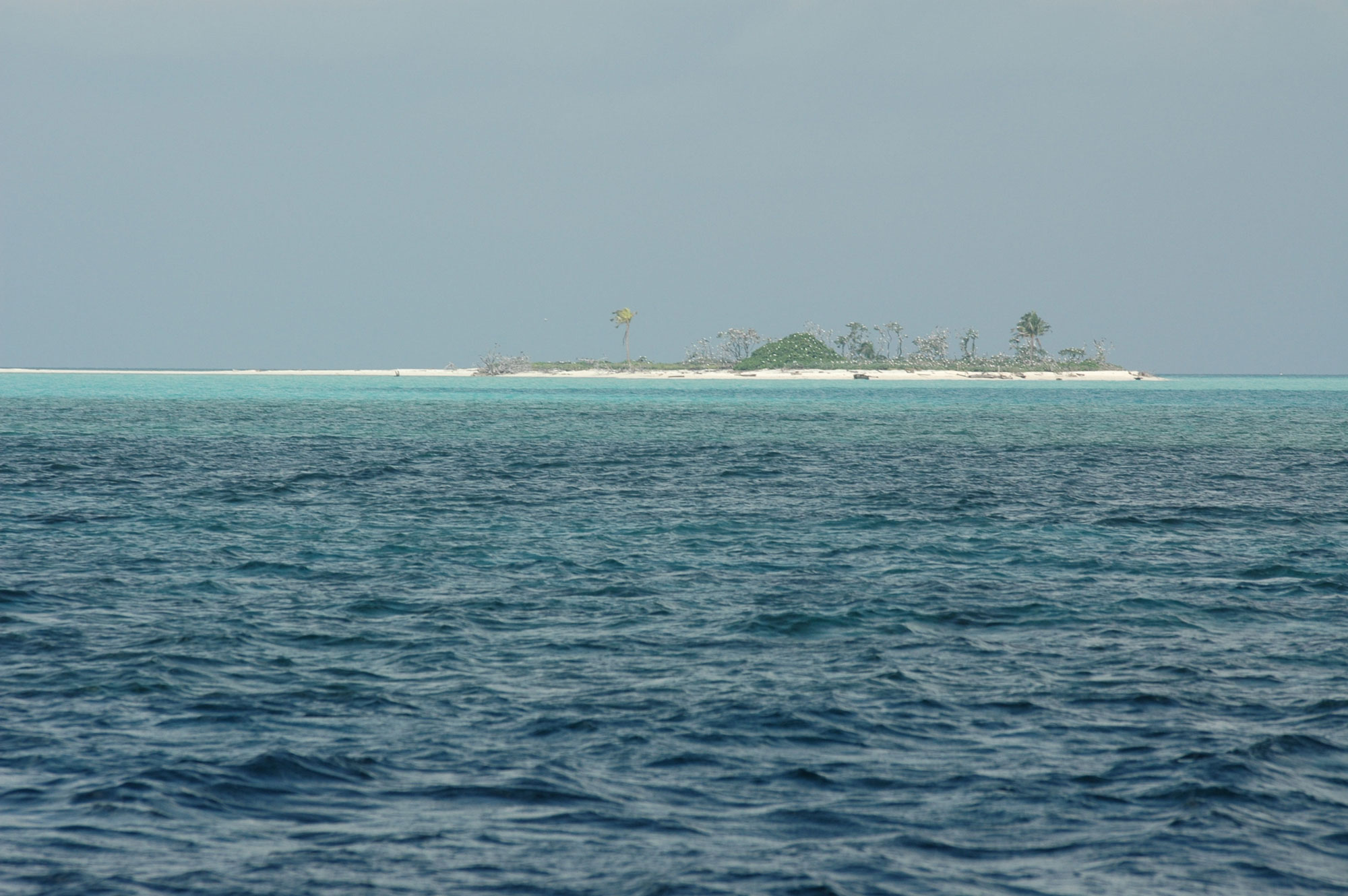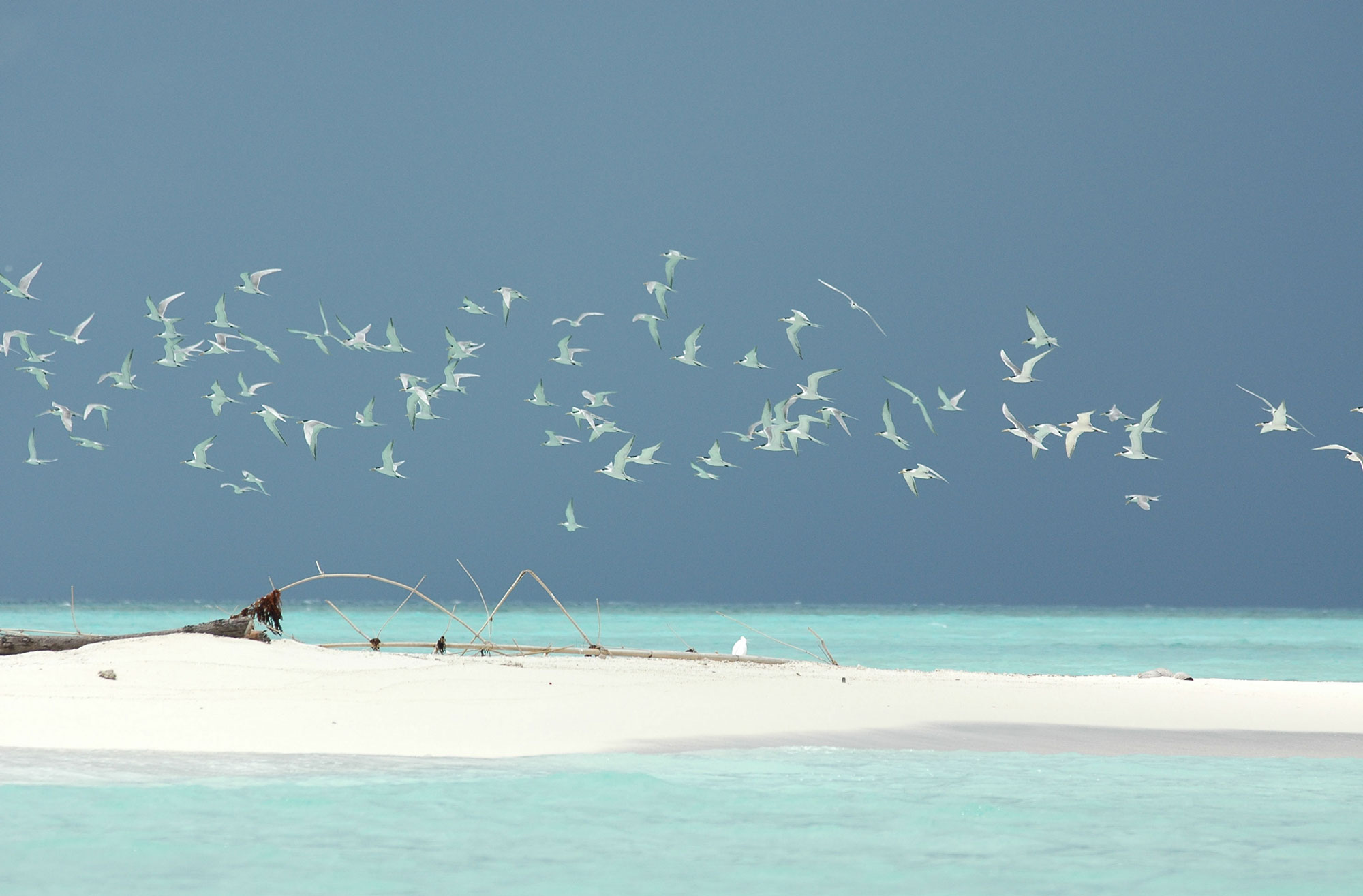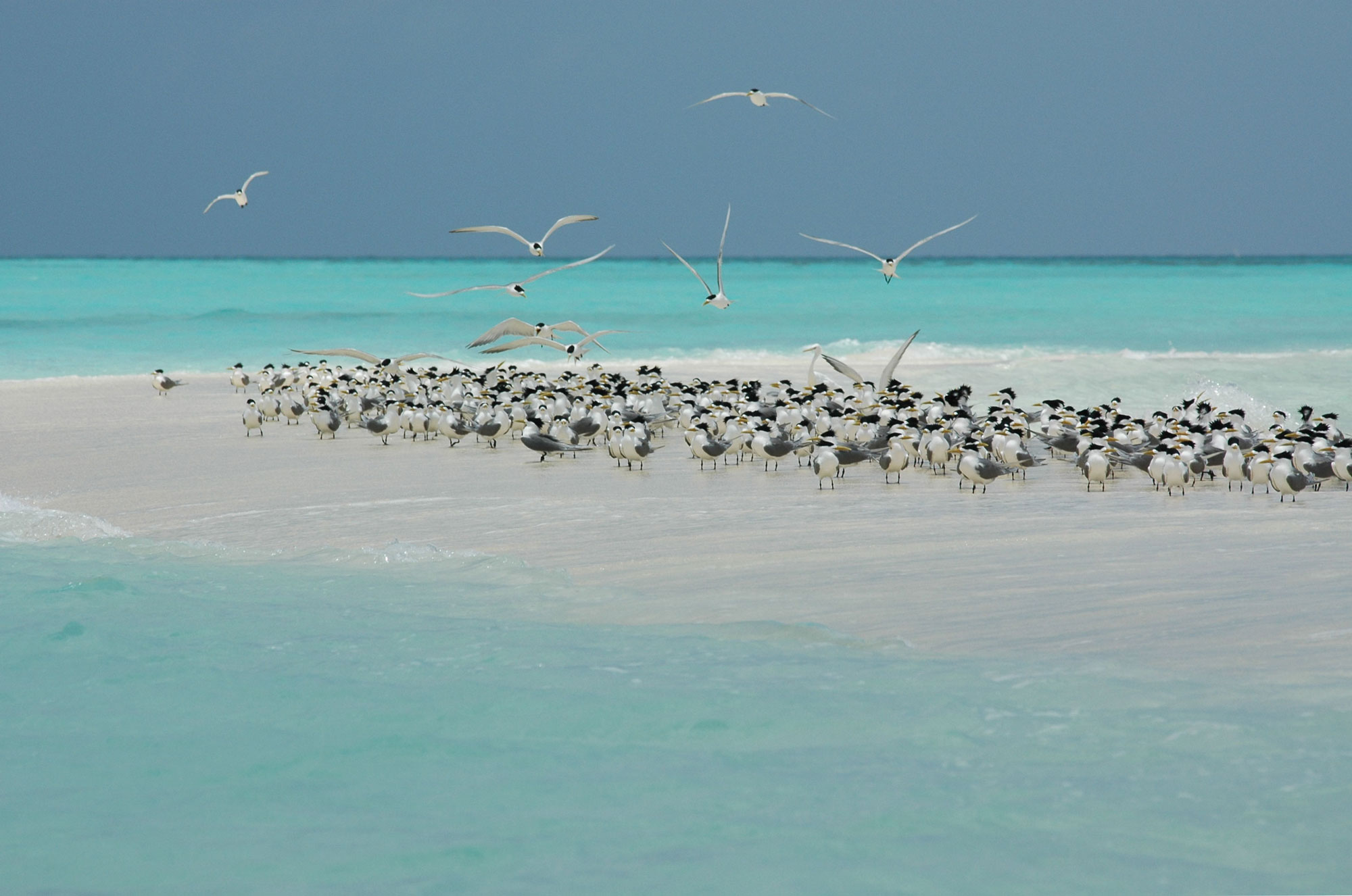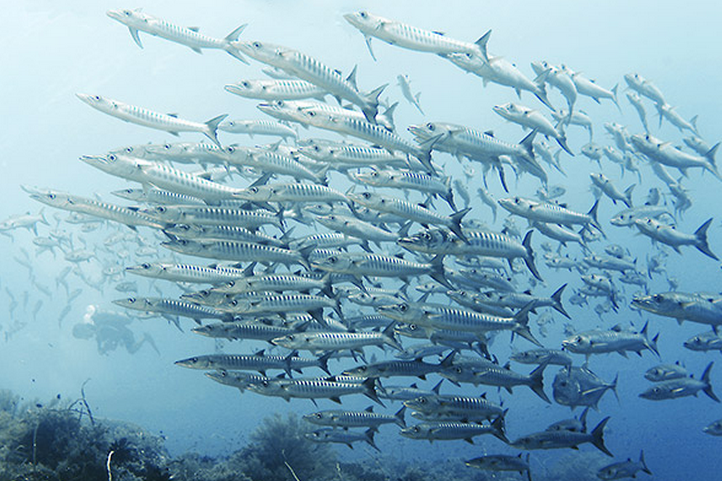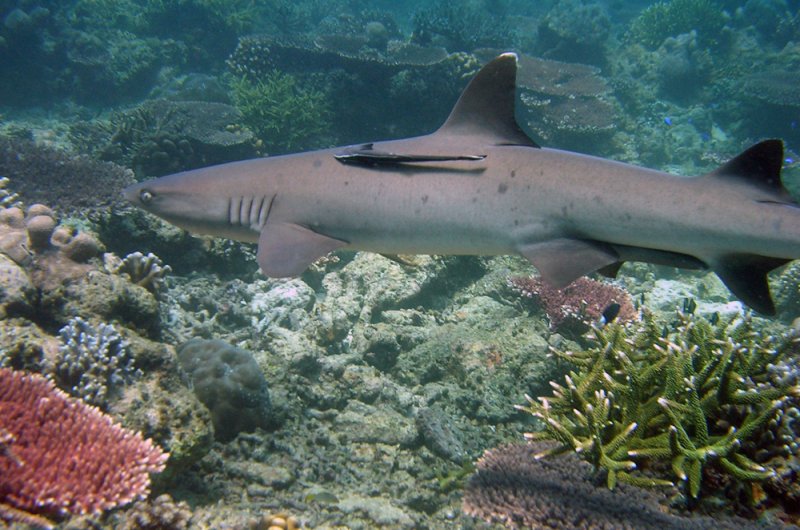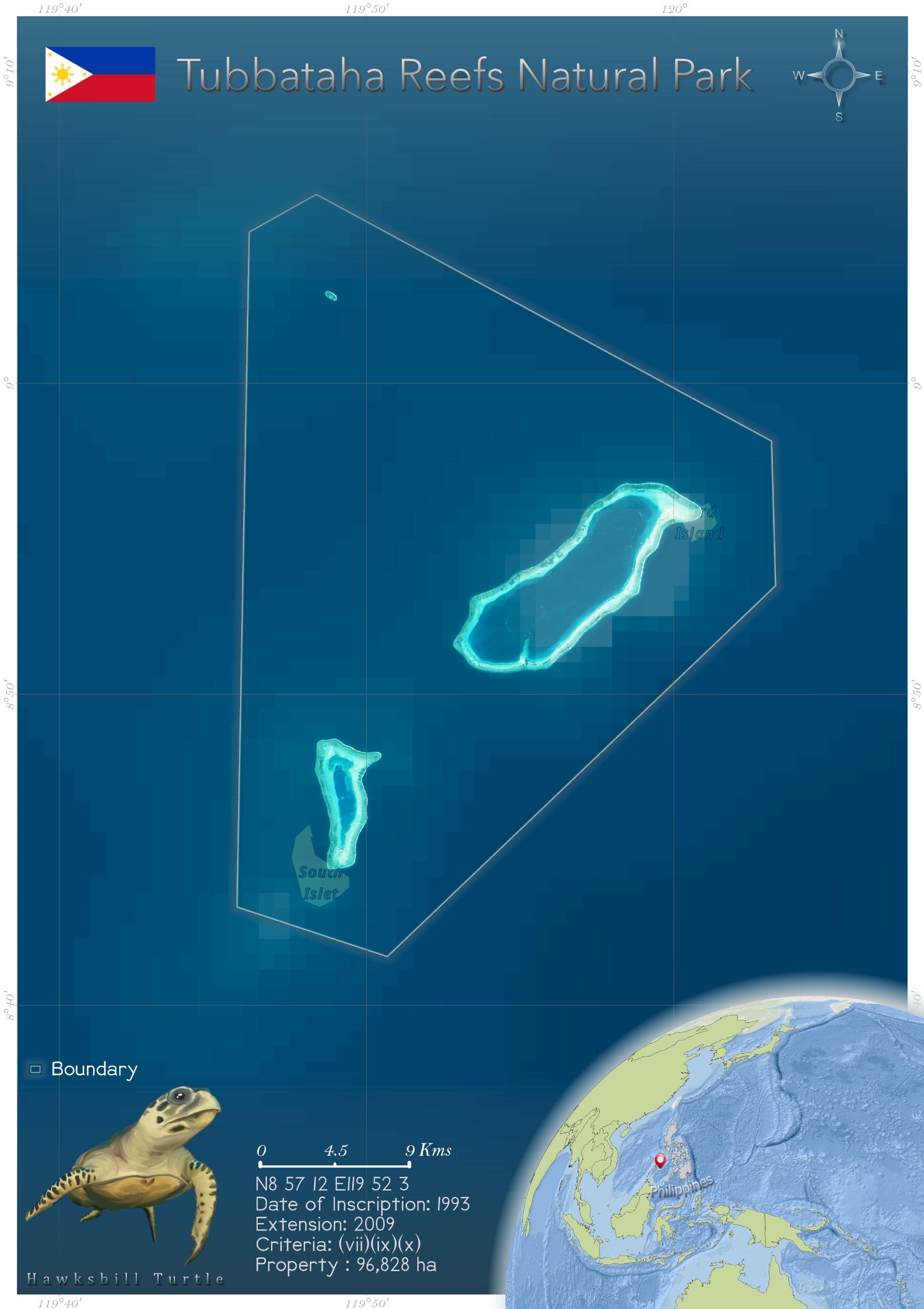
Tubbataha Reefs Natural Park (653)
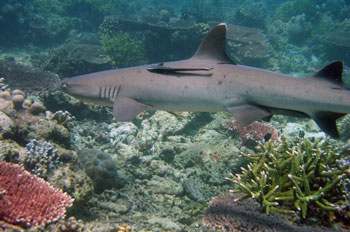 The Tubbataha National Park is located at the apex of the coral triangle in the Pacific Ocean. The property is situated in the Province of Palawan, Philippines. The property is a complete marine national park that is confined between the north and south atolls and Jessie Beazley Reefs in the middle of the Sulu Sea. The national park is of great importance because of the atoll reefs with substantial marine biodiversity. The park includes a 100 m perpendicular wall of glorious coral reefs, lagoons, and two coral islands.
The Palawan Biosphere Reserve under UNESCO's Man and Biosphere Programme is included in this property; the Tubbataha Reef National Park is included in the RAMSAR list of wetlands. With the astonishing scenic beauty, the park is home to various marine animals, seabirds, and corals.
By analyzing the state of Conservation report of 2011 and IUCN World Heritage Outlook 2020, the park's management is working efficiently despite lacking the resources and financial aid. The property holds the title of "Good with Some Concerns" under the criteria of IUCN Outlook. The site is having threats like habitat destruction, ocean acidification, and water pollution.
The Tubbataha National Park is located at the apex of the coral triangle in the Pacific Ocean. The property is situated in the Province of Palawan, Philippines. The property is a complete marine national park that is confined between the north and south atolls and Jessie Beazley Reefs in the middle of the Sulu Sea. The national park is of great importance because of the atoll reefs with substantial marine biodiversity. The park includes a 100 m perpendicular wall of glorious coral reefs, lagoons, and two coral islands.
The Palawan Biosphere Reserve under UNESCO's Man and Biosphere Programme is included in this property; the Tubbataha Reef National Park is included in the RAMSAR list of wetlands. With the astonishing scenic beauty, the park is home to various marine animals, seabirds, and corals.
By analyzing the state of Conservation report of 2011 and IUCN World Heritage Outlook 2020, the park's management is working efficiently despite lacking the resources and financial aid. The property holds the title of "Good with Some Concerns" under the criteria of IUCN Outlook. The site is having threats like habitat destruction, ocean acidification, and water pollution.
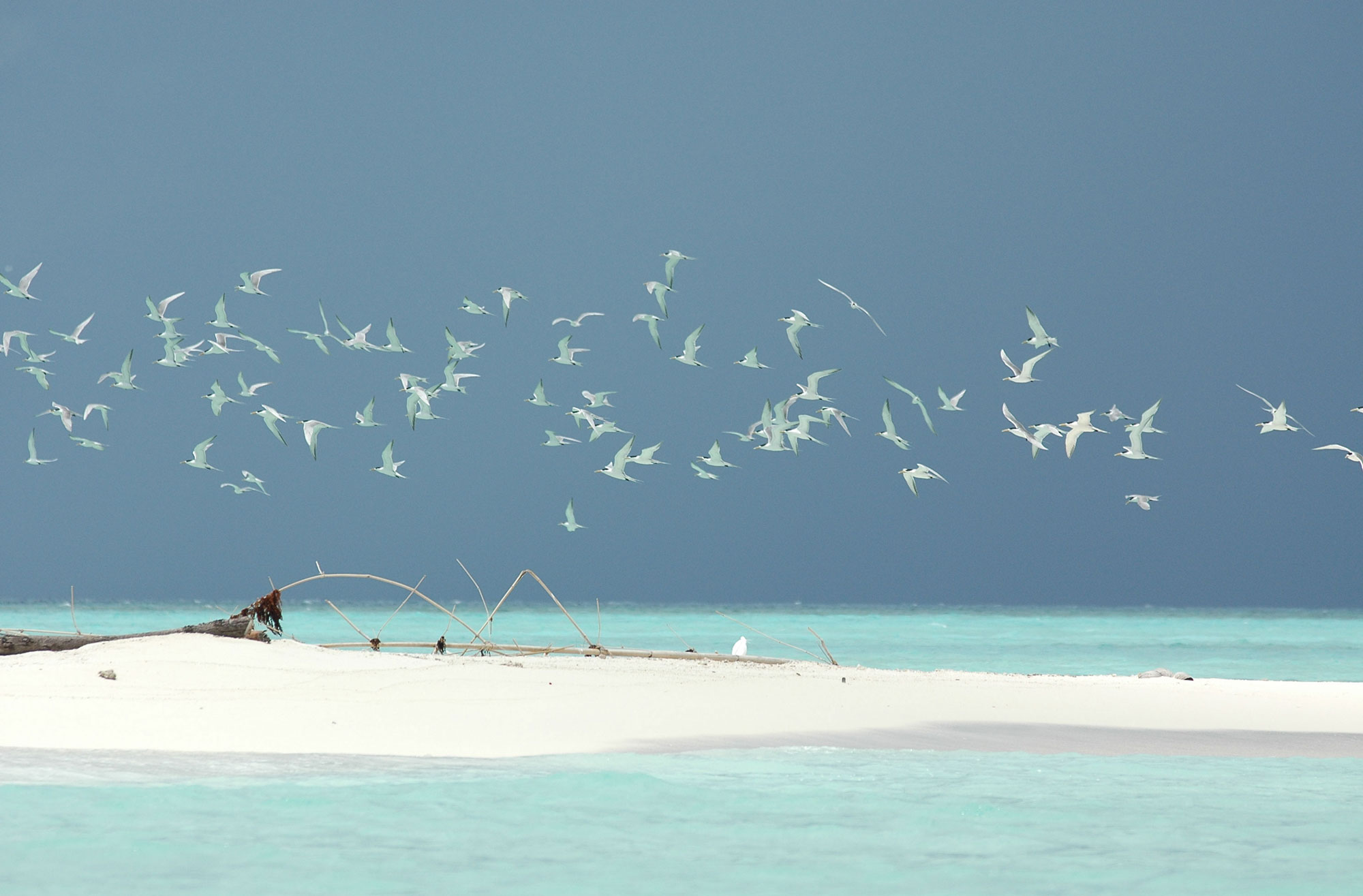 The Tubbataha Reef marine national park covers around 97 ha situated at 8o 57'12' N and 199o 572'3'E. The Tubbataha Reef National Park is covered by Cagayan Ridge in the northeast and southwest from Sultana Shoal in Cagayancillo (Dygico et al. 2006) and situated at the height of 2 m to 100 m (World Heritage Datasheet). The park is home to extensive marine ecosystems constrained in a deep-sea and three atolls and is the largest and best-enforced marine protected area in the Philippines (Dygico et al. 2013). Its open sea's average depth is around 750m representing well-balanced ecosystems with top predators, a vast diversity of coral reefs, and pelagic species. Having extraordinarily high biodiversity, the site is in the middle of the Sulu Sea, having around 33,200 hectares of offshore reefs (Samonte-Tan et al. 2009). The site is very famous among the divers and is one of the most popular scuba diving sites in the world (Subade 2009).
This property is declared as a National Marine Park on 1 August 1988 (Subade 2009). After the property's declaration as a national park, the Tubbataha's management jurisdiction passed from the municipal government of the Cagayancillo to the national government via the Department of Environment and Natural Resources (DENR). After the property got labeled as a national entity, the park became off-limit to fishing, and many things like collecting corals, wildlife got banned within the park boundaries. The enactment of Republic Act 10067 (TRNP Act of 2009) on 6 April 2010 established Tubbataha as a Protected Area under the National Integrated Protected Areas System (NIPAS-R.A. 7586) and the Strategic Environmental Plan (SEP-R.A. 7611) for Palawan (Dygico et al. 2013).
On 11 December 1993, the site was declared UNESCO's World Heritage site (Dygico et al. 2006; Subade 2009). The world heritage site also includes two units conserved by other bodies under this property; Palawan Biosphere reserve by UNESCO Man and Biosphere Program and Tubbataha Reef National Park got included in the RAMSAR list of Wetlands on 19 November 1999 (Dygico et al. 2006; RAMSAR Site Information Service).
The Palawan Biosphere Reserve is situated on the west side of the Philippines and covers the entire province of Palawan. It got proclaimed as a Biosphere Reserve in the 1990 under UNESCO'S Man and Biosphere Program (MAB) and is spread over 1,150,800 ha (UNESCO Man And Biosphere Program). The WHS site has one of the highest coral biodiversity in the world, sheltering the species like vulnerable Staghorn Coral (Acropora abrolhosensis) and Dana Staghorn Coral (Acropora aculeus). The rare species like white-tip sharks (Carcharhinus longimanus), endangered Humphead Wrasse (Cheilinus undulatus) can be found in this area. These islands are the only breeding site for the Black Noddy (Anous minutus worcestri) which is the endemic species inhabiting this area. The park serves as the breeding and feeding site of the critically endangered species like Christmas Island Frigatebird (Fregata andrewsi) and Hawksbill Turtle (Eretmochelys imbricata) (RAMSAR Site Information Service).
The Tubbataha Reef marine national park covers around 97 ha situated at 8o 57'12' N and 199o 572'3'E. The Tubbataha Reef National Park is covered by Cagayan Ridge in the northeast and southwest from Sultana Shoal in Cagayancillo (Dygico et al. 2006) and situated at the height of 2 m to 100 m (World Heritage Datasheet). The park is home to extensive marine ecosystems constrained in a deep-sea and three atolls and is the largest and best-enforced marine protected area in the Philippines (Dygico et al. 2013). Its open sea's average depth is around 750m representing well-balanced ecosystems with top predators, a vast diversity of coral reefs, and pelagic species. Having extraordinarily high biodiversity, the site is in the middle of the Sulu Sea, having around 33,200 hectares of offshore reefs (Samonte-Tan et al. 2009). The site is very famous among the divers and is one of the most popular scuba diving sites in the world (Subade 2009).
This property is declared as a National Marine Park on 1 August 1988 (Subade 2009). After the property's declaration as a national park, the Tubbataha's management jurisdiction passed from the municipal government of the Cagayancillo to the national government via the Department of Environment and Natural Resources (DENR). After the property got labeled as a national entity, the park became off-limit to fishing, and many things like collecting corals, wildlife got banned within the park boundaries. The enactment of Republic Act 10067 (TRNP Act of 2009) on 6 April 2010 established Tubbataha as a Protected Area under the National Integrated Protected Areas System (NIPAS-R.A. 7586) and the Strategic Environmental Plan (SEP-R.A. 7611) for Palawan (Dygico et al. 2013).
On 11 December 1993, the site was declared UNESCO's World Heritage site (Dygico et al. 2006; Subade 2009). The world heritage site also includes two units conserved by other bodies under this property; Palawan Biosphere reserve by UNESCO Man and Biosphere Program and Tubbataha Reef National Park got included in the RAMSAR list of Wetlands on 19 November 1999 (Dygico et al. 2006; RAMSAR Site Information Service).
The Palawan Biosphere Reserve is situated on the west side of the Philippines and covers the entire province of Palawan. It got proclaimed as a Biosphere Reserve in the 1990 under UNESCO'S Man and Biosphere Program (MAB) and is spread over 1,150,800 ha (UNESCO Man And Biosphere Program). The WHS site has one of the highest coral biodiversity in the world, sheltering the species like vulnerable Staghorn Coral (Acropora abrolhosensis) and Dana Staghorn Coral (Acropora aculeus). The rare species like white-tip sharks (Carcharhinus longimanus), endangered Humphead Wrasse (Cheilinus undulatus) can be found in this area. These islands are the only breeding site for the Black Noddy (Anous minutus worcestri) which is the endemic species inhabiting this area. The park serves as the breeding and feeding site of the critically endangered species like Christmas Island Frigatebird (Fregata andrewsi) and Hawksbill Turtle (Eretmochelys imbricata) (RAMSAR Site Information Service).
Criterion (vii)
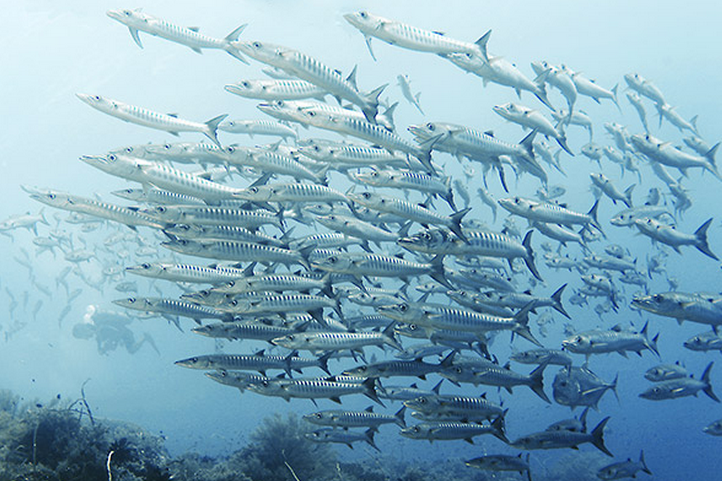 Tubbataha Reefs Natural Park contains excellent examples of pristine reefs with a high diversity of marine life. The property includes extensive reef flats and perpendicular walls reaching over 100m depth, as well as large areas of deep sea. The remote and undisturbed character of the property and the continued presence of large marine fauna such as tiger sharks, cetaceans and turtles, and big schools of pelagic fishes such as barracuda and trevallies add to the aesthetic qualities of the property.
Tubbataha Reefs Natural Park contains excellent examples of pristine reefs with a high diversity of marine life. The property includes extensive reef flats and perpendicular walls reaching over 100m depth, as well as large areas of deep sea. The remote and undisturbed character of the property and the continued presence of large marine fauna such as tiger sharks, cetaceans and turtles, and big schools of pelagic fishes such as barracuda and trevallies add to the aesthetic qualities of the property.
Criterion (ix)
Tubbataha Reefs Natural Park lies in a unique position in the middle of the Sulu Sea and is one of the Philippines’ oldest ecosystems. It plays a key role in the process of reproduction, dispersal and colonization by marine organisms in the whole Sulu Sea system, and helps support fisheries outside its boundaries. The property is a natural laboratory for the study of ecological and biological processes, displaying the ongoing process of coral reef formation, and supporting a large number of marine species dependant on reef ecosystems. The presence of top predator species, such as tiger and hammerhead sharks, are indicators of the ecological balance of the property. The property also offers a demonstration site to study the responses of a natural reef system in relation to the impacts of climate change.
Criterion (x)
Tubbataha Reefs Natural Park provides an important habitat for internationally threatened and endangered marine species. The property is located within the Coral Triangle, a global focus for coral biological diversity. The reefs of the property support 360 species of corals, almost 90% of all coral species in the Philippines. The reefs and seas of the property also support eleven species of cetaceans, eleven species of sharks, and an estimated 700 species of fishes, including the iconic and threatened Napoleon wrasse. The property supports the highest population densities known in the world for white tip reef sharks. Pelagic species such as jacks, tuna, barracuda, manta rays, whale sharks and different species of sharks also are common here and the property is a very important nesting, resting and juvenile development area for two species of endangered marine turtles: green turtles and hawksbill turtles. There are seven breeding species of seabirds and Bird Islet and South Islet are breeding grounds to seven resident and endangered breeding species of seabirds. The critically endangered Christmas Island Frigatebird is a regular visitor to the property.
Status
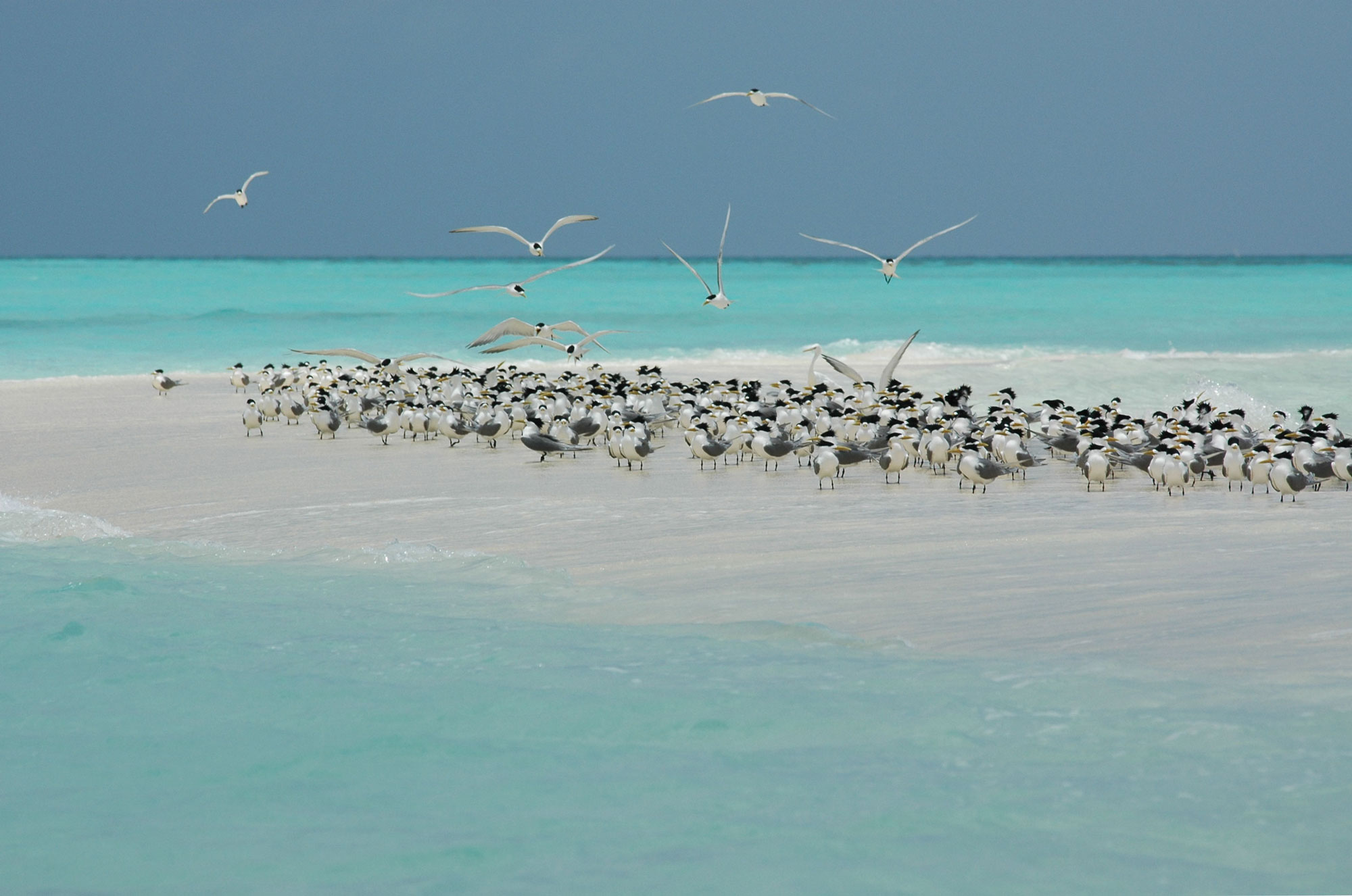 According to the report of WWF Philippines by Dygico et al. 2006, The Park's management keeps meandering since the beginning. For almost two years, From March 1988 to 1990, a Cebu-based Seawood company named Shemberg Marketing Corporation, a colossal Seawood industry, has established its operations in the park, which is evidence that the management was a bit poor. Then in 1990, a foundation signed a memorandum of agreement with DENR. The Tubbataha Foundation assisted the management in fundraising, information, and education programs as the foundation was new and did not have prior experiences, so it did not persist for a long time and became inactive by the end of 1994 (UNESCO whc.unesco.org).
An action plan was created by President Ramos on July 20, 1995, a multi-sectoral Presidential Task Force for Tubbataha Reef National Park for reversing the environmental degradation (Subade 2009; Dygico et al. 2006). When the result of this was unsatisfactory, and the park's enforcement was still the problem; on November 7, 1996, President Fidel Ramos himself visited the park, and the chairmanship of the Presidential Task Force for Tubbataha Reef National Park was shifted from Secretary of the Department of Environment and Natural Resources (DENR) to the Secretary of National Defense (DND). At the same time, WWF-Philippines also started to assist the TRNMP through research and monitoring. The park received funding and grants from various national and international organizations like WWF- the United States, Government of Japan, the Philippine Department of Tourism, the Sulu Fund, and some local NGOs like Saguda Palawan. As the Task Force cannot attain complete success, the Governor has founded the Tubbataha Protected Area Management Board (TPAMB). At present, it has been recorded that the TPAMB and TMO (Tubbahata Management Office) are working quite successfully in spite of having minimal resources (Dygico et al. 2013).
Some increasing species like sea-birds and starfish tend to replace others, so the management also has to take precautions from these adverse impacts. The property is extended to a 10-nautical mile as the newly added buffer zone according to the Tubbataha Reefs Natural Park Act (2009), the jurisdiction is still unclear (State of Conservation report 2011).
The Philippines are among one of the six countries which are part of the Coral Triangle Initiative (CTI), an initiative to conserve the oral Triangle's marine and coastal resources. To establish effective management, the CTI has developed a Regional Plan of Action (Dygico et al. 2013).
By examining the IUCN World Heritage Outlook of the year 2020, the property is in the category of "Good with some concerns". The property's threats are relatively low, but few threats are from water pollution and solid waste by the floating debris into the marine park. Some other threats are climate change which has resulted in extreme temperature and ocean acidification. Illegal fishing is seen somewhat in the park, but the impact on the site is low. The habitat destructions mainly started in the late 1980s, and one of the causes of the destruction was fishing with destructive methods; the living coral cover started to decline in 1989 by 24% (Rodelio F. Subade). The assessment done by the IUCN World Heritage Outlook 2020 says the overall management of the TRNP is excellent. The committee has implemented some plans like Management Plan (2011-2021) and several sub-plans (such as enforcement and interpretation).
According to the report of WWF Philippines by Dygico et al. 2006, The Park's management keeps meandering since the beginning. For almost two years, From March 1988 to 1990, a Cebu-based Seawood company named Shemberg Marketing Corporation, a colossal Seawood industry, has established its operations in the park, which is evidence that the management was a bit poor. Then in 1990, a foundation signed a memorandum of agreement with DENR. The Tubbataha Foundation assisted the management in fundraising, information, and education programs as the foundation was new and did not have prior experiences, so it did not persist for a long time and became inactive by the end of 1994 (UNESCO whc.unesco.org).
An action plan was created by President Ramos on July 20, 1995, a multi-sectoral Presidential Task Force for Tubbataha Reef National Park for reversing the environmental degradation (Subade 2009; Dygico et al. 2006). When the result of this was unsatisfactory, and the park's enforcement was still the problem; on November 7, 1996, President Fidel Ramos himself visited the park, and the chairmanship of the Presidential Task Force for Tubbataha Reef National Park was shifted from Secretary of the Department of Environment and Natural Resources (DENR) to the Secretary of National Defense (DND). At the same time, WWF-Philippines also started to assist the TRNMP through research and monitoring. The park received funding and grants from various national and international organizations like WWF- the United States, Government of Japan, the Philippine Department of Tourism, the Sulu Fund, and some local NGOs like Saguda Palawan. As the Task Force cannot attain complete success, the Governor has founded the Tubbataha Protected Area Management Board (TPAMB). At present, it has been recorded that the TPAMB and TMO (Tubbahata Management Office) are working quite successfully in spite of having minimal resources (Dygico et al. 2013).
Some increasing species like sea-birds and starfish tend to replace others, so the management also has to take precautions from these adverse impacts. The property is extended to a 10-nautical mile as the newly added buffer zone according to the Tubbataha Reefs Natural Park Act (2009), the jurisdiction is still unclear (State of Conservation report 2011).
The Philippines are among one of the six countries which are part of the Coral Triangle Initiative (CTI), an initiative to conserve the oral Triangle's marine and coastal resources. To establish effective management, the CTI has developed a Regional Plan of Action (Dygico et al. 2013).
By examining the IUCN World Heritage Outlook of the year 2020, the property is in the category of "Good with some concerns". The property's threats are relatively low, but few threats are from water pollution and solid waste by the floating debris into the marine park. Some other threats are climate change which has resulted in extreme temperature and ocean acidification. Illegal fishing is seen somewhat in the park, but the impact on the site is low. The habitat destructions mainly started in the late 1980s, and one of the causes of the destruction was fishing with destructive methods; the living coral cover started to decline in 1989 by 24% (Rodelio F. Subade). The assessment done by the IUCN World Heritage Outlook 2020 says the overall management of the TRNP is excellent. The committee has implemented some plans like Management Plan (2011-2021) and several sub-plans (such as enforcement and interpretation).
